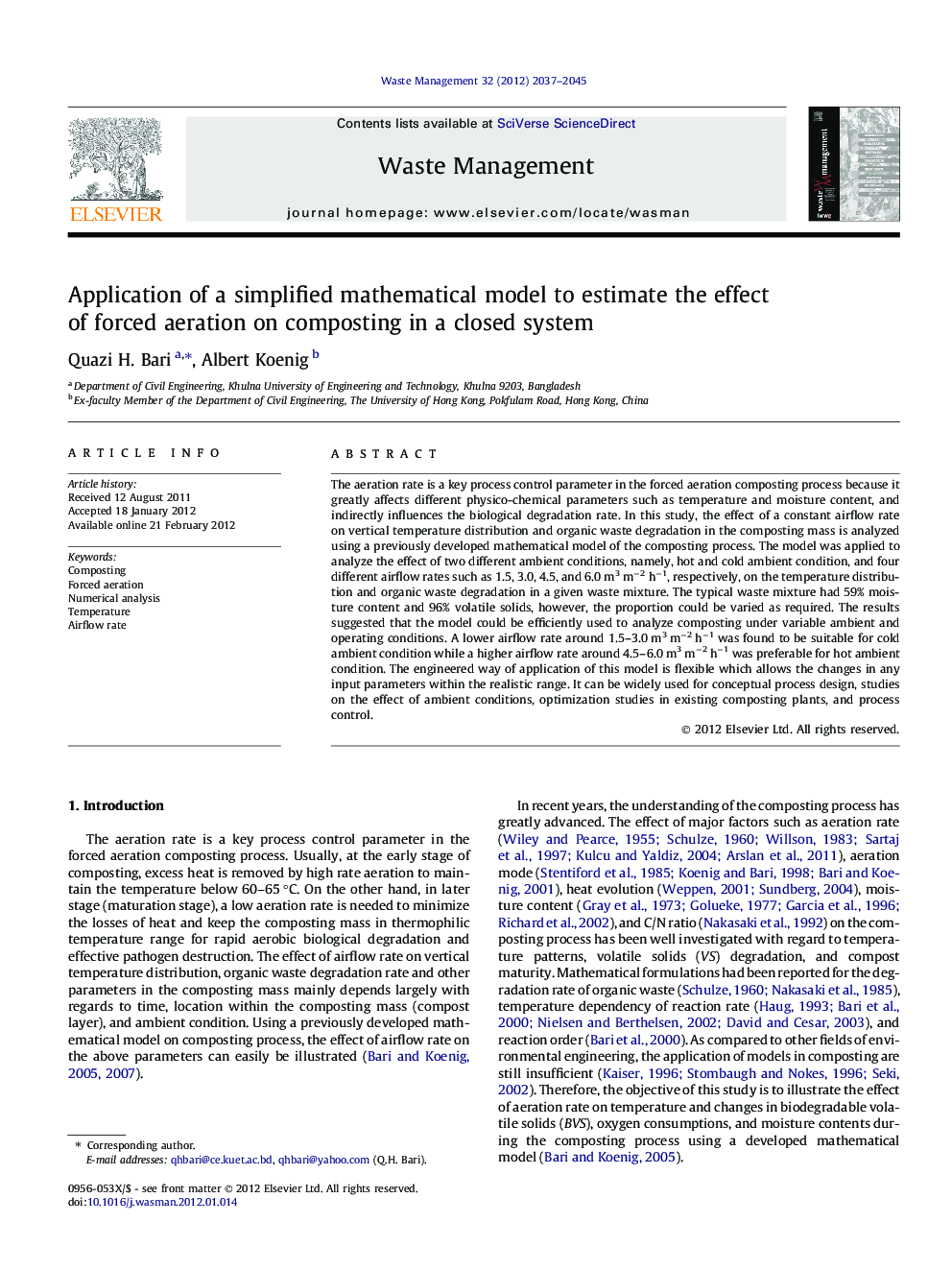| Article ID | Journal | Published Year | Pages | File Type |
|---|---|---|---|---|
| 4472128 | Waste Management | 2012 | 9 Pages |
The aeration rate is a key process control parameter in the forced aeration composting process because it greatly affects different physico-chemical parameters such as temperature and moisture content, and indirectly influences the biological degradation rate. In this study, the effect of a constant airflow rate on vertical temperature distribution and organic waste degradation in the composting mass is analyzed using a previously developed mathematical model of the composting process. The model was applied to analyze the effect of two different ambient conditions, namely, hot and cold ambient condition, and four different airflow rates such as 1.5, 3.0, 4.5, and 6.0 m3 m−2 h−1, respectively, on the temperature distribution and organic waste degradation in a given waste mixture. The typical waste mixture had 59% moisture content and 96% volatile solids, however, the proportion could be varied as required. The results suggested that the model could be efficiently used to analyze composting under variable ambient and operating conditions. A lower airflow rate around 1.5–3.0 m3 m−2 h−1 was found to be suitable for cold ambient condition while a higher airflow rate around 4.5–6.0 m3 m−2 h−1 was preferable for hot ambient condition. The engineered way of application of this model is flexible which allows the changes in any input parameters within the realistic range. It can be widely used for conceptual process design, studies on the effect of ambient conditions, optimization studies in existing composting plants, and process control.
